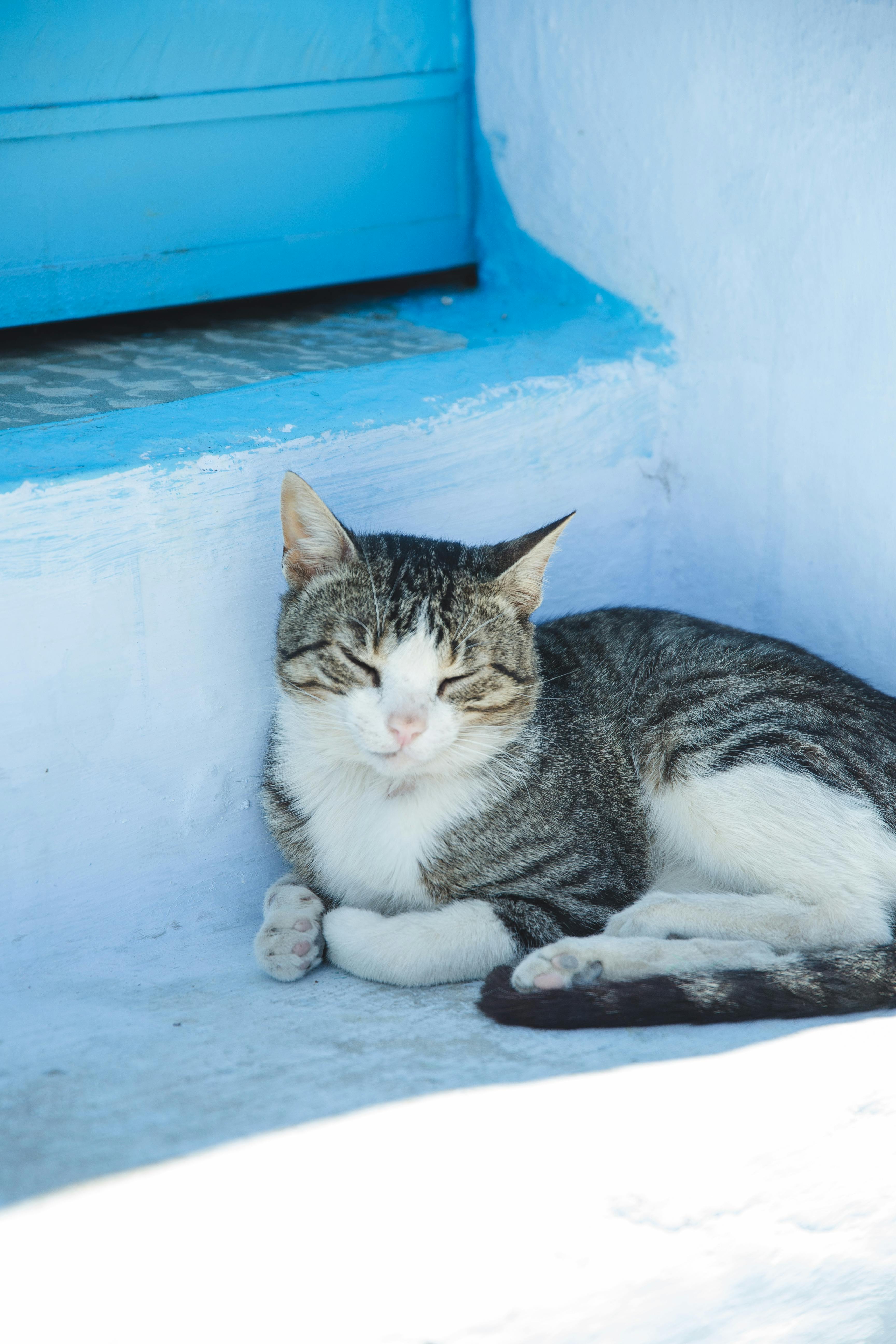Safeguarding Your Feline Friend: Unraveling the Value of Pet Insurance for Indoor Cats

Taudiry.com Assalamualaikum semoga kalian dalam perlindungan tuhan yang esa. Kini saya akan membahas perkembangan terbaru tentang Insurance. Artikel Ini Membahas Insurance Safeguarding Your Feline Friend Unraveling the Value of Pet Insurance for Indoor Cats jangan sampai terlewat.
Table of Contents
The Rising Trend of Pet Insurance
As pet owners grow increasingly cognizant of the significance of safeguarding their furry companions' well-being, the pet insurance industry has witnessed a remarkable surge in recent years. According to the North American Pet Health Insurance Association (NAPHIA), more than 5.6 million dogs and cats in the United States were covered by pet insurance in 2023, a staggering 17% increase from the previous year. This trend underscores the growing recognition among pet parents of the potential financial burdens associated with unexpected veterinary expenses.
The Financial Implications of Unexpected Veterinary Costs
While indoor cats may face fewer risks compared to their outdoor counterparts, they are not immune to the possibility of accidents, injuries, or illnesses that can culminate in substantial veterinary bills. From swallowing foreign objects to sustaining fractures due to falls or encountering health issues like urinary tract infections, the costs of treatment can rapidly escalate, often reaching thousands of dollars.
Assessing the Cost of Pet Insurance
To determine whether pet insurance is a worthwhile investment, it is crucial to evaluate the associated costs. According to NAPHIA data from 2023, the average annual cost for an accident and illness policy is approximately $676 for dogs and $383 for cats, translating to around $56 per month for dogs and $32 per month for cats. However, it is important to note that premiums can vary significantly based on factors such as your pet's age, breed, and the specific policy you choose.
Understanding Policy Structures and Coverage
Most pet insurance policies operate on a deductible-based system, where you are responsible for paying a predetermined amount before the insurance provider begins to reimburse a percentage of the remaining costs. Typically, policies offer reimbursement rates ranging from 70% to 90%, with annual maximum payout limits. It is crucial to carefully review the policy details to understand the extent of coverage and any exclusions or limitations.
Deductibles and Reimbursement Rates
For instance, let's consider a scenario where you have a $500 deductible on a plan that pays up to $10,000 per year and reimburses 80% of your costs. If your cat requires a $2,000 surgery and you haven't met the deductible yet, your plan would pay either $1,100 or $1,200, depending on when the reimbursement rate is applied.
If the deductible is applied first: $2,000 - $500 deductible = $1,500. 80% of $1,500 = $1,200.
If the reimbursement rate is applied first: $2,000 x 0.8 = $1,600. $1,600 - $500 = $1,100.
Covered and Excluded Expenses
It is important to note that while pet insurance can provide financial assistance for unexpected medical expenses, it typically does not cover routine care such as vaccinations, annual check-ups, or preventive dental care. Additionally, pre-existing conditions are generally excluded from coverage, meaning that any conditions your pet had before the policy took effect will not be covered.
The Cost of Veterinary Care for Indoor Cats
According to the American Pet Products Association (APPA), cat owners spend an average of $251 annually on surgical veterinary visits and $183 on routine veterinary visits. However, these costs can escalate rapidly in the event of serious illnesses or injuries.
Some of the most common medical conditions that may require extensive treatment and incur significant expenses for indoor cats include:
Gastroenteritis
Urinary tract diseases
Kidney failure
Dental diseases
Degenerative arthritis
Hyperthyroidism
Respiratory infections
Diabetes
Inflammatory bowel disease
Atopic or allergic dermatitis
While some of these conditions may be relatively minor and inexpensive to treat, others could necessitate extensive diagnostic testing, surgical interventions, or ongoing medication, leading to substantial financial burdens.
The Advantages of Pet Insurance for Indoor Cats
Despite the common perception that indoor cats face fewer health risks, they are still susceptible to a wide range of medical conditions, some of which can be costly to treat. Pet insurance can provide several advantages for indoor cat owners:
Financial Protection
One of the primary benefits of pet insurance is the financial protection it offers against unexpected veterinary expenses. By spreading the cost of healthcare over the term of the policy, pet owners can ensure that they have access to the necessary medical treatment for their feline companions without facing the burden of a significant one-time expense.
Peace of Mind
In addition to financial protection, pet insurance can provide pet owners with invaluable peace of mind. Knowing that their furry friend will receive the necessary medical attention, regardless of the cost, can alleviate a significant source of stress and anxiety.
Early Detection and Intervention
Pet insurance can also encourage pet owners to seek veterinary care promptly when they notice any concerning symptoms or changes in their cat's behavior. By removing financial barriers, pet owners can prioritize their cat's well-being and increase the chances of early detection and intervention, potentially leading to better treatment outcomes and reduced long-term costs.
Considerations for Choosing Pet Insurance
When evaluating pet insurance options for your indoor cat, it is essential to consider the following factors:
Age and Health of Your Cat
Pet insurance premiums tend to be lower for younger and healthier cats, as they are generally at a lower risk of developing medical conditions. If your cat is already experiencing health issues or is a senior, the premiums may be higher, and some conditions may be excluded as pre-existing.
Policy Coverage and Exclusions
Carefully review the policy details to ensure that it provides the desired level of coverage for your cat's specific needs. Pay close attention to the deductibles, reimbursement rates, annual limits, and any exclusions or limitations that may apply.
Reputation and Financial Stability of the Insurance Provider
Research the insurance provider's reputation, financial stability, and customer service record to ensure that you are working with a reliable and trustworthy company that will honor its commitments when you need to file a claim.
Budgeting and Financial Considerations
While pet insurance can provide valuable protection, it is essential to factor the premiums into your overall budget. Consider whether the monthly or annual cost of the policy is affordable for your financial situation and whether it aligns with your priorities and risk tolerance.
Alternatives to Pet Insurance
If pet insurance does not seem like a viable option for you, there are alternative strategies to consider for managing potential veterinary expenses:
Self-Funding
Instead of paying premiums to an insurance provider, you can set aside a designated amount each month into a high-yield savings account or emergency fund specifically for your cat's medical expenses. This approach allows you to maintain control over the funds and use them as needed, but it requires diligent saving and may not provide sufficient coverage for unexpected, large expenses.
Financial Assistance Programs
In cases of financial hardship, there are various charitable organizations and assistance programs that may be able to provide grants or support for pet owners facing significant veterinary bills. Your veterinarian may also be willing to work with you on a payment plan or recommend more affordable treatment options.
Making an Informed Decision
Ultimately, the decision to purchase pet insurance for your indoor cat is a personal one that should be based on your individual circumstances, financial situation, and risk tolerance. By carefully evaluating the costs, coverage, and potential benefits, you can make an informed choice that aligns with your priorities and ensures the best possible care for your feline companion.
Remember, while pet insurance may not be a necessity for every pet owner, it can provide invaluable peace of mind and financial protection against the unexpected. As responsible pet parents, it is our duty to explore all available options to ensure the well-being and longevity of our beloved furry friends.
Sekian ulasan tentang safeguarding your feline friend unraveling the value of pet insurance for indoor cats yang saya sampaikan melalui insurance Terima kasih atas dedikasi Anda dalam membaca ciptakan peluang dan perhatikan asupan gizi. share ke temanmu. Sampai bertemu lagi


✦ Tanya AI